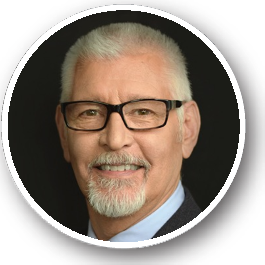Back Health—Providing Care During the Time of Coronavirus
 |
CSS Panelist: Hamilton Hall, MD, FRCSC, Professor, Department of Surgery, University of Toronto; Medical Director, Canadian Back Institute; Executive Director, Canadian Spine Society, Toronto, ON. |
 |
CSS Panelist: Y. Raja Rampersaud, MD, FRCSC, University Health Network; Professor Department of Surgery, University of Toronto, Division of Orthopaedic Surgery; Past President Canadian Spine Society, Toronto, ON. |
 |
CSS Panelist: John Street, MD, PhD, FRCSC, Associate Professor, Department of Orthopedics, University of British Columbia, Medical Director, Complex Spine Program, Vancouver General Hospital, Vancouver, BC. |
 |
CSS Panelist: Fábio Ferri-de-Barros, MD, MSc (Bioethics), FSBOT, FSBOP (Hon.), FRCSC, FCS(ECSA), President, Canadian Paediatric Spine Society; Quality Improvement Lead, Division of Paediatric Surgery; Pediatric Orthopaedics and Spine Surgeon Director; Pediatric Spine Fellowship Clinical Associate Professor Department of Surgery University of Calgary; Alberta Children's Hospital. |
 |
Primary Care Panelist: Marina Abdel Malek, MD, BScN, Family Physician, advisory board member JCCC and HealthPlexus.net, Toronto, ON. |
 |
Primary Care Panelist: John Yap, MD, Family Physician, Clinical Assistant Professor at the University of British Columbia, New Westminster, BC. |
|
During "normal" times, BACK PAIN was one of the most prevalent and costly complaints in North America. It is among the most common medical reasons to see a family physician and is an enormous burden to society in general and the delivery of health care in particular. How do we move forward and restart care for patients with back health problems after COVID-19? This and other questions will be discussed by our distinguished panel of members of the Canadian Spine Society and Primary Care Physicians. |
This eLearning module fits within the Mainpro+ Self-Learning Activities Section. You may submit this non-certified* activity for one non-certified credit per hour. *Non-certified activities have not been formally reviewed by the College but comply with the College’s definition of CPD, are non-promotional in nature, and provide valuable professional learning opportunities. |
| Views and opinions in this program are of the faculty and not necessarily endorsed by, or reflective of, those of the publisher of www.healthplexus.net and Journal of Current Clinical Care. |
Brought to you by www.HealthPlexus.net, Journal of Clinical Care and Lumensify™
About www.HealthPlexus.net
Is a modern professional educational resource that covers over 35 health-related topics, conditions and concerns. It hosts a large published archive of Clinical Reviews, Case Studies, Visual Aids library and CME presentations. The portal is optimized for mobile devices.
Journal of Current Clinical Care (JCCC)
JCCC is a digital CME publication that publishes 6 regular issues per year. The publication offers unique opportunities for professional groups ‒ such as societies and associations ‒ that are seeking new avenues for dissemination of their educational materials to broader audiences.
About Lumensify™
Today new and immersive technologies are offering companies unparalleled levels of engagement that were not possible until now. Lumensify™ focuses on serving the Canadian and International Healthcare Industry by utilizing these advanced technologies combined with our expertise to take customer engagement to an entirely new level by creating highly interactive and immersive opportunities to engage and enrich the quality of experiences with your offering.

